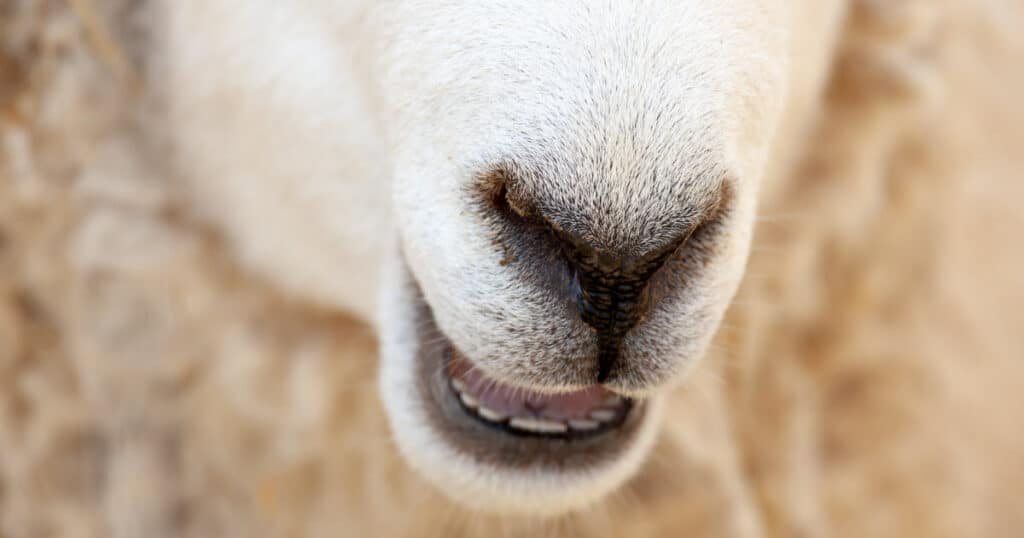If you have sheep or you plan to start a flock, you need to understand their teeth and how important they are for the animal’s health. Dental health is important for any kind of animal, and it’s especially vital for sheep. After all, they are grazing animals. How well a sheep can graze depends on its dental condition and health. Beyond this, sheep teeth can help you determine a sheep’s age.
In this article, I’ll explain how to age sheep by their teeth. I’ll also explain some dental problems to watch out for and avoid when selecting breeding stock for your flock.
Understanding Sheep Teeth
There are eight incisor teeth at the front of the sheep’s lower jaw and no incisors in the upper jaw. The upper jaw has a hard plate, instead. The incisors are separated by a space from the molars.
The molars, of course, are at the back of the mouth on both the lower and upper jaw. Molars help with chewing cud, meanwhile sheep use the incisors and plate for cropping and chewing on grass as they graze.
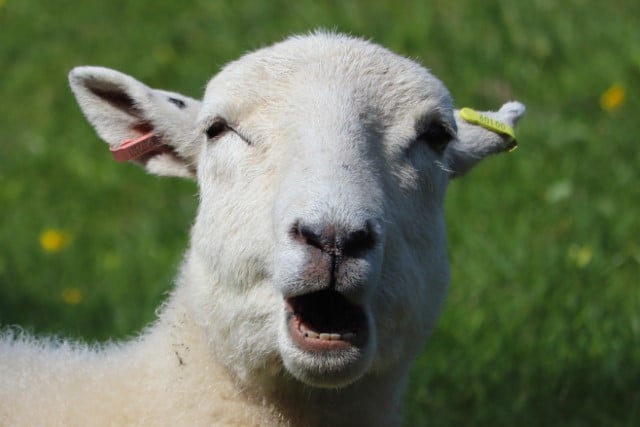
How and When Sheep Grow Teeth
A sheep has 32 permanent teeth. The animal’s temporary incisor teeth appear one at a time at intervals of weeks after it is born. Sheep’s three temporary premolars appear within about two to six weeks of birth. At about 15 months after birth, the first permanent central pair of incisors come in.
They start being considered in wear when the animal gets to 18 months of age. The animal’s other permanent incisor teeth erupt at intervals of 6 months. At 3 and 5 months, the first permanent molar comes up.
At between 9 and 12months, the second permanent molar erupts. The permanent premolars and third permanent molar erupt when the animal reaches between 18 and 24 months of age.
Sheep Teeth Problems to Check While Breeding
When you purchase sheep or decide on which ones you want to use for breeding, you must carefully examine the animal’s mouth. Ensure that the incisors and plate meet.
There shouldn’t be an undershot or an overshot. Also, there shouldn’t be any rough edges on the molars’ outside edges. If these are present, the animal will probably have problems with abscesses.
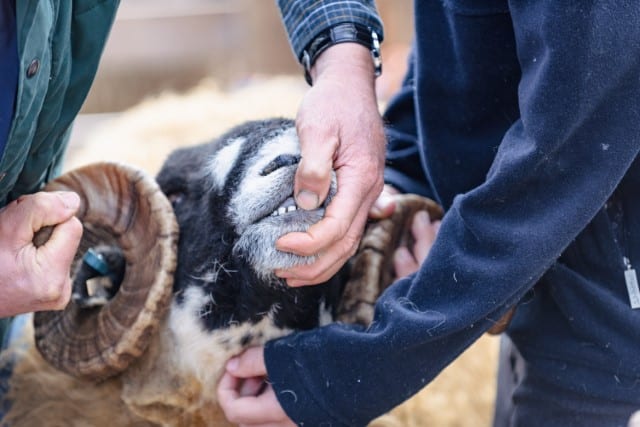
Sheep’s teeth can give you an idea of how old the animal is. Newborn lambs have eight milk teeth, found at the front of the mouth. Each year, new teeth replace two milk teeth, beginning with the teeth in the middle of the mouth.
So, for example, an animal with two adult incisors at the front center of its lower jaw is a yearling. If the sheep had two pairs (four total) adult incisors, it would be a two year old, etc.
When the sheep reaches about four years of age, it will usually be “full-mouthed.” Beyond this age, sheep may start losing teeth (or become “broken mouthed”).
A sheep that has loose tooth can have more problems than one that has missing teeth. If you have a small flock, an older ewe may be able to stay productive if it is fed in a way that will properly keep up their body condition.
The state of the molars is extremely important. If they end up being broken or rough and the sheep cannot eat properly, nothing can usually be done and the sheep will probably need to be culled.
Healthy Dentition is Vital for Sheep
A sheep needs to have healthy dentition to feed properly and stay healthy. When a sheep has poor dentition, its body condition is likely to deteriorate. When a sheep loses its incisor teeth prematurely (has a “broken mouth”), it is likely to lead to culling.
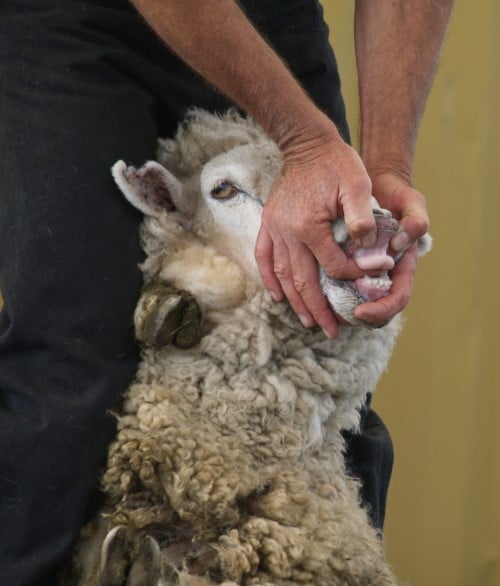
This is because the sheep will be unable to bite off rough pasture or short pasture. This will lead to weight loss, malnutrition, and problems with production.
Molar teeth that are absent, worn, or overgrown can lead to issues with mastication of fibrous food. This will end up with the animal losing too much weight.
Incisor teeth loss is quickly identified during proper dentition checks. This should be done routinely when deciding on the selection process and grouping ewes with rams for breeding season.
When a sheep’s incisor teeth are going to be lost, they take on an elongated look then become loose. Eventually, they fall out.
You can help to determine whether a sheep has proper alignment of its incisor teeth by running one of your index fingers along the animal’s dental pad. As you do this, the sheep’s mouth should be closed and its head should be in its normal resting position.
During this examination, you should be able to tell if there are teeth projecting forward from where they should normally come in contact with the dental pad. In the breed Blueface Leicester, overshot jaw, also called prognathia, is a quite common hereditary condition).
When they come behind where they should be instead of in front, that is called undershot jaw. Another term for this is brachygnathia.
Watch Out for Dentigerous (Odontogenic) Cysts
Dentigerous cysts can be a problem in young adult sheep. The cause of this kind of cyst is uncertain. The ages at which sheep tend to have this condition range from 2 to 4 years of age.
When these cysts are present, the sheep may have poor body conditions if they have been having challenges with grazing for several months.
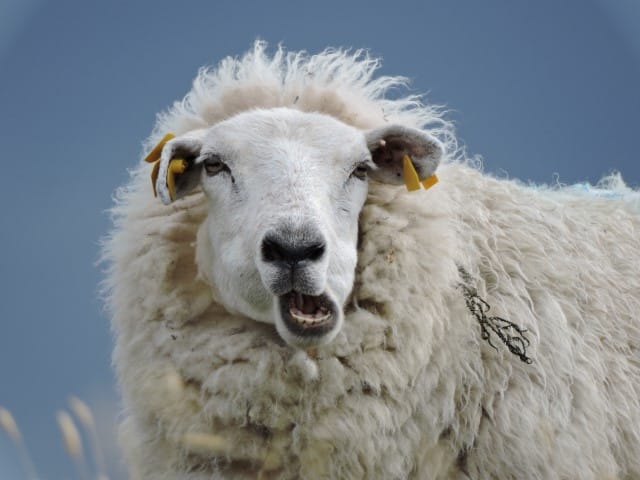
With these cysts, you will detect a bony and uniform swelling of the mandibular symphysis. This will be approximately 5 to 6 centimeters in diameter. It will involve the roots of the sheep’s incisor teeth.
It’s possible that some of the sheep’s incisor teeth are no longer in place while the remaining incisors are aligned in a horizontal way.
Ewes that have these cysts should be managed in a way similar to how broken-mouthed sheep are. This includes supplementary feeding and preferential grazing.
Older Sheep Dentition
Excessive wear on the molar and premolar teeth are problems that can lead to malocclusion and inadequate mastication of fibrous food in older sheep.
When this occurs, there may be poor condition and weight loss.
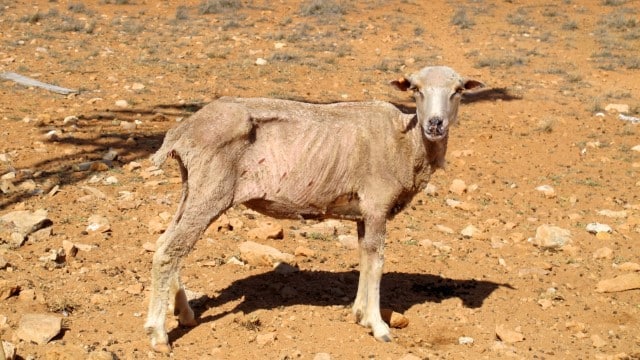
When cheek teeth have problems, there can be even more significant problems than when there is loss of incisors. This is because of the grinding function that is necessary with fibrous feeds.
I recommend that shepherds check the mouth of all of their lambs each year after they are weaned and before they are 6 months of age. Any animals with a severe underbite or overbite should be culled.
I also recommend that you check the teeth of your sheep each year when they are shorn. This is a time when you’ll have your hands on the animal, and a quick check will help you flag any issues.

